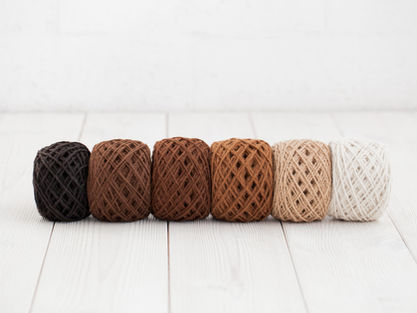How to package and ship clothing?
- Knit-Lab Peru

- 2 jun 2025
- 3 Min. de lectura
If you have a fashion eCommerce, such as working with knitwear manufacturers or selling other apparel, packing and shipping clothes efficiently are important to improve profit margins. To do this, it is not enough to choose the cheapest carrier. You must learn how to manage the order and minimize shipping costs.
In this article, you’ll discover how to ship clothes, learn more about the major shipping options, and get a look at the intricacies of international shipping.
Factors to consider when shipping clothes
Below are the factors you need to master to ensure your shipments will always get to customers without a hitch:
Packaging and marketing
Packaging protects the product and helps in identifying and promoting your brand. Effective packaging can also reduce costs and enhance the unboxing experience.
Shipping companies
To select the right one, consider the following:
Destination address
Package weight
Delivery speed
Service options
Insurance
Shipping rates
There are three options you can choose from:
Real-time carrier rate: you can let your customers choose and pay for the exact shipping option they want by setting up real-time carrier rates.
Flat Rate: This may not be effective if you sell a variety of clothing, but it works when you have a standard product line.
Free shipping: You can increase product prices to cover the cost of shipping or pay the full price from your margins. You can offset costs by limiting free shipping to an order amount.
How to package clothes for shipping?
Follow these steps so your clothes arrive at their destination in perfect condition:

You can also read: Guide to sell knitting online
Step 1: Fold the clothes
Efficiently folded, clothing takes up less space, allowing for optimized packaging and storage both in the shipping process and at the final destination.
Step 2: Use the right packaging for each shipment
The right packaging ensures that your clothes reach your customer in perfect condition, enhancing their shopping experience and your brand image.
Step 3: Fill in the gaps
If there are any empty spaces in the package, fill them with cushioning material. This will prevent the clothes from wobbling, getting damaged, or becoming disorganized.
How to ship clothes you sell online?
All you need to do is:
Step 1: Weigh and measure the clothes before shipping
Knowing the weight and measurements of your packages is necessary to calculate the cost of shipping. Stick with smaller boxes as much as possible to reduce shipping costs.
Step 2: Prepare the order
Use a box that fits the size of the clothes, leaving some space so that the garments are not under pressure. Place the garments compactly inside the box and use tape to prevent carriers from opening the box by mistake during shipment.
Step 3: Contact a carrier
Choose a carrier that has wide coverage in the regions where you want to ship your clothes.
This will allow you to reach your customers regardless of their location, optimizing delivery time and cost.
Step 4: Generate shipping documentation
Shipping documentation allows the carrier to deliver orders to the agreed address. Not only do they ensure a smooth delivery, they also allow you to comply with legal and customs requirements.

What if you need to ship clothes internationally?
Here are a few points to consider when shipping clothes internationally:
Country rules and regulations
The rules and regulations of the destination country are important when evaluating if your product is eligible to be imported. Clothing is rarely prohibited, but it's worth checking out whether the clothing type you are exporting is allowed.
Duties and taxes
By default, the customer pays the duties on the package you are shipping, but you can choose the shipper or another third party to pay the charges when creating your shipment on the platform of your carrier. Use an online duty calculator to get a cost estimate of the duties and taxes that apply in the destination country.
If you are looking to make a business with alpaca fiber our services at Knit-Lab Peru include sourcing for knitting manufactures and a wide range of artisans and industrial factories for large-scale productions. Contact us for more info!















Comentarios